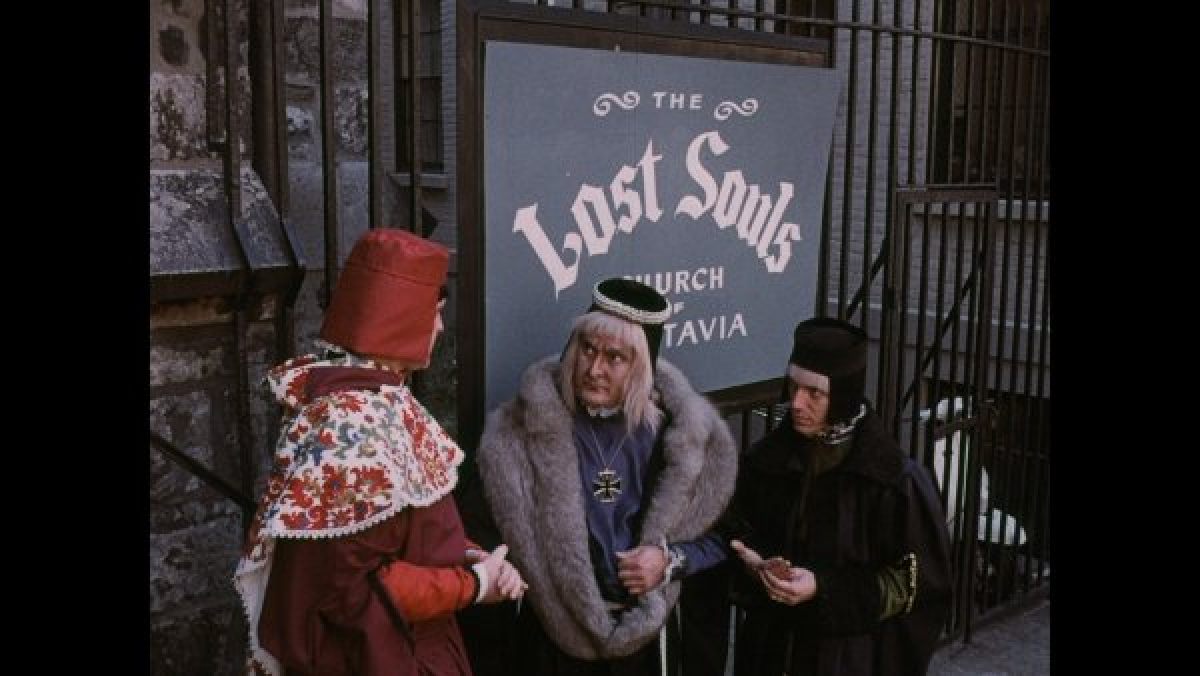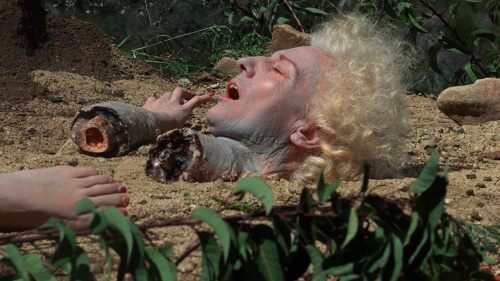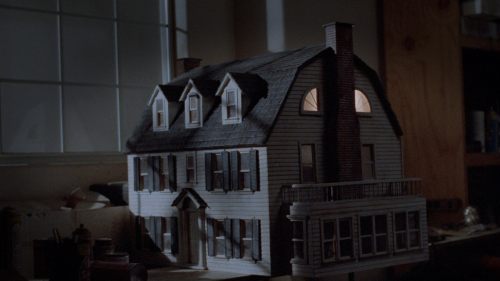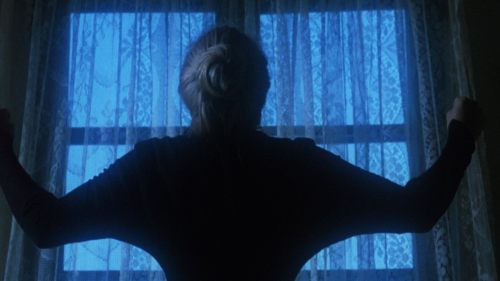Exploitation TV: Volume Thirteen
For cinephiles, the definition of home video label Vinegar Syndrome’s name is something like a secret handshake. The disease it references consumes celluloid. When film stock starts to degrade, it releases acetic acid, the key ingredient in (you guessed it) vinegar. This phenomenon became a plague during the 80s, chewing up prints of pictures improperly stored in hot, humid conditions. In many cases, where reels of smaller films were scarce due to budgetary restrictions, one bad case of vinegar syndrome could rob the planet of an artist’s work.
According to a ‘12 study conducted by the Library of Congress, only 14% of nearly 11,000 movies made between 1912 and 1930 exist in their original format. Around 70% were lost completely. Coming in at a close second in terms of casualties is the Exploitation Era. This really shouldn’t come as a surprise to anyone, as many of the weirder, more obscure movies made during these decades of disrepute are pictures we’ve probably never heard of in the first place. Thankfully, the Bridgeport, Connecticut boys at VS own a private archive, from which they’ve been pulling and scanning prints of overlooked horror, exploitation and smut cinema from all eras. To make it easier on all us degenerates, they’ve even established a streaming service, where you can log in and watch all the back alley oddities they’ve been uncovering and preserving, so that true vinegar syndrome doesn’t rob us of any more great trash art.
For the thirteenth installment of EX TV, we showcase a triple feature of pictures from $2 NYC schlock maestro, Andy Milligan...

Guru, The Mad Monk [1970] (d. & w. Andy Milligan)
Andy Milligan wasn't just a grindhouse trash auteur, he literally lived and worked in The Deuce, putting enough scratch together in order to shoot his often single location period pieces in Staten Island churches, before inflating the budgets so that low rent distributors would pay him more for his Bolex-lensed gutter creations. According to Bill Landis' Sleazoid Express, his films often played one of the better theaters in the area - the Lyric, which was sandwiched on either side by the porno houses where Andy would pick up men and women whenever the urge hit him - in the middle of triple features with bigger name titles that could draw in working class folks, or the hustlers who just needed a break from scamming tourists. In short, he was a product of this scummy community who gave back to the weirdos he interacted with every day through the art he poured every ounce of himself into.
Guru, The Mad Monk is a prime example of Milligan's no-fi handcrafted costume melodramas, featuring a few of his regular players - including Neil Flanagan (Torture Dungeon ['70]) as the titular freakish Father - who would always lend his productions the aura of a family affair. The schizophrenic Guru's lesbian vampire mistress (Jacqueline Webb) feeds on the blood of a new gorgeous prisoner (Judith Israel) the priest keeps in his lair, as he's conned the girl's lover (Paul Lieber) into bringing him dead bodies so that he may practice his twisted experiments.
Despite the obvious limitations, Milligan had a flair for Gothic histrionics, staging the scenes with a talent he'd found at the experimental Chaffe Chino theater, and stitched the actors' costumes himself (as he worked in Manhattan's garment district after first moving to New York). Running just under an hour, it's no wonder the movie became a mainstay in Times Square, as it provided cheap, bombastic thrills for almost no overhead, the recycled score nearly drowning Flanagan's numerous monologues, before racing to a showdown with his own impish Igor (Jack Spencer). Whenever a theater was short on content, Andy could rent them one of his own reels, which he kept in his apartment. That's just the sort of homegrown business he'd cultivated.

Fleshpot On 42nd Street [1973] (d. & w. Andy Milligan)
By every account, Milligan may have been a married man at one point - to Gutter Trash ('69) actress Candy Hammond - yet he still indulged his own sexual fluidity, often engaging in casual anonymous sex at all-male revues, and was part of a clan of chickenhawks who traded underage boys for sadism sessions, where Andy would abuse the lads before, during, and after sexual intercourse with them. He knew pimps, hookers, was often a john, and even tricked on occasion for extra money. In short, he was just your average 42nd Street pervert, who alternately loathed and loved the fellow degenerate denizens of the Deuce.
Perhaps that's why Fleshpot On 42nd Street feels so authentic - as it's down in the alleys with the working girls of Times Square, who're scraping up just enough to make the $40/month rent, or get a couple bucks more at the pawn shop if they just take the owner in the back room for a few minutes of making it. Dusty Cole (Laura Cannon) is our streetwise guide, able to leave her live-in boyfriend behind and shack up with an Ed Wood-looking transvestite hooker (Neil "Lynn" Flanagan) with acid in her veins. The two trade tips on how to gain and lose a man, as Dusty's new roomie tells her to "love 'em and leave 'em", while Cole chases down the washed up losers who have second thoughts when they take a girl with an Adam's Apple behind the dumpster for a blow job.
Interestingly enough is the casting of porn star Harry Reems as a sympathetic john Dusty picks up at a Staten Island bar, whom the new working girl falls for. Fleshpot has love for the stud, who defends the Island to Dusty, before giving her a key to his apartment the very next day. It's almost like Milligan's straining to recognize that individuals who spend their days knee-deep in smut can also be genuinely good people, too. They're not all abusive assholes, looking to invite a girl over and just start beating her with their belt. It's stark reality crossed with the grimy DIY auteur's penchant for pure drama, amalgamating into this uneven patchwork of a fictional time capsule. Then it ends by destroying all hope Dusty ever had for the future, because the misanthropic filmmaker can't let us see too much of the sun, after all.

Blood [1974] (d. & w. Andy Milligan)
Following Fleshpot on 42nd Street, Milligan returned to the horror world, churning out what he claimed to be the biggest budgeted production of his career to date ($20,000 - which, rumor has it, mostly went toward his house's mortgage). Yet Blood's narrative about the grandson of a werewolf (Allan Berendt) and his vampire wife (Hope Stansbury) setting up shop in a New York suburb (the time period appearing Victorian, but never verbally defined) is actually far less baroque than it may first appear. Milligan's usual visual inconsistencies remain - visible light switches and sockets, a reflection showing cars passing outside at one point - but are easily dismissed when we take into account the fact that this weird couple set up an Addams Family-style clan, complete with plasma gulping plants that they must keep watered by opening fresh victims. Blood almost plays like Andy's Spider Baby ('67), delivering his take on Jack Hill's "maddest story ever told".
It's not difficult to pinpoint how personal Blood feels once you consider Milligan's own narrative. His union to Candy Hammond ended in '69 due to his restlessness and sexual appetites, and the melodramatic strife that's injected into this supernatural relationship generally reflects his feelings on the institution of marriage. They're arrangements of necessity and convenience, all while outside forces seek to worm their way into these unhappy homes, splitting them apart in a flurry of rage, overlapping shouting, and murder. These conflicts seem to be much more intriguing to Milligan's Bolex than the shoddy creature makeup, or the werewolf's bride planting a hatchet in the back of a man's skull. Like the best DIY weirdos, he was working his personal shit out through homemade pulp, charging us matinee prices to gawk if we felt so inclined.
Blood was distributed through Bryanston - the creation of the Peraino mob family, who were trying to create a cinematic washer through which they could clean their dirty money. But once they hit it big with both Deep Throat ('72) and The Texas Chain Saw Massacre ('74), they couldn't evade the IRS for much longer. Milligan's movie was often packaged on double bills with Gerard Damiano's Legacy of Satan ('74) - hardcore horror that had all the sex trimmed out to play as a "legitimate" work - and his attempts at collecting payment for his picture's revenues turned into a frustrating endeavor. This, along with other negative experiences with various shady distributors, soured him on the film business, as he only produced six more works over the next fifteen years (as opposed to the one piece of sexploitation per month he was churning out at his peak), before dying in '91 from complications due to AIDS.
Tune in next week for three more picks from your new favorite channel. In the meantime, log in to Vinegar Syndrome’s streaming service to embark upon your own filthy adventures.



